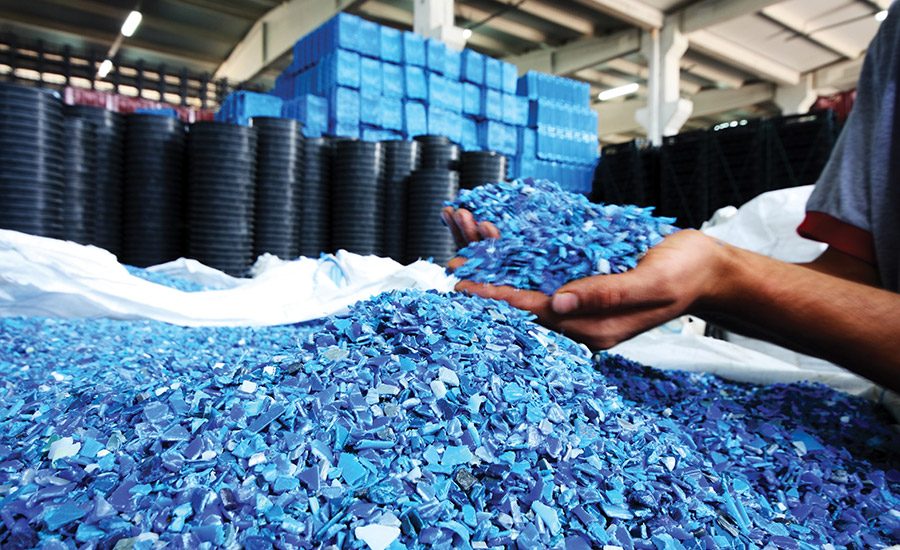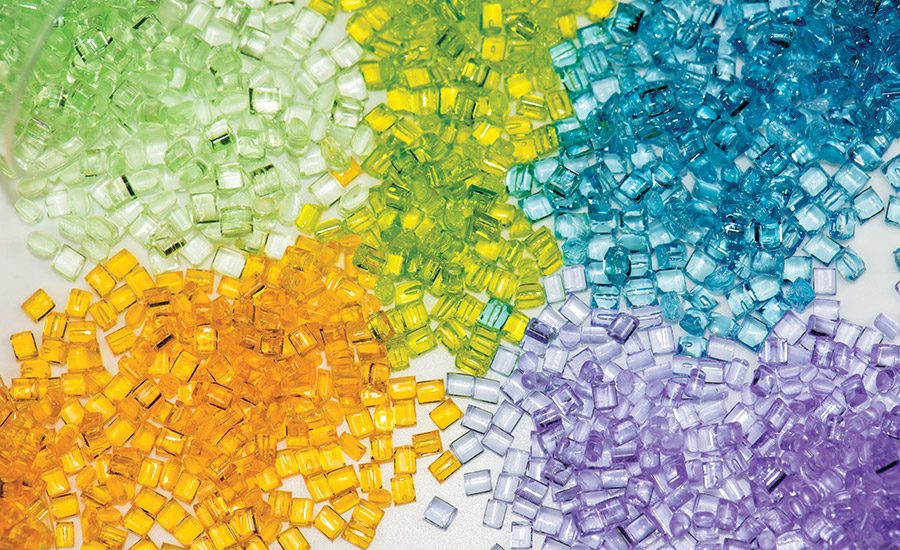2019 Raw Materials and Chemicals Roundtable
Uncertainty, rising costs and sustainability are among the concerns facing the raw materials market.


Julie Vaughn Biege, global business development director, Emerald Performance Materials

Peter Migchels, global sales development director, Kraton

James E. Swope, senior vice president, The ChemQuest Group and ChemQuest Technology Institute






The raw materials market is continuously impacted by factors including rising prices, limited supply and other uncertainties. This month, we posed a number of questions regarding these key topics to leading adhesives and chemicals suppliers and industry leaders; following are their responses.
What was your company’s biggest challenge in 2018? How did you handle it?
Julie Vaughn Biege, global business development director, Emerald Performance Materials: Escalating raw material prices have been presenting significant headwinds in 2018 and are expected to continue to do so in the year ahead. We have focused on supply chain, terms and analytics tools to not only improve cash flow but better anticipate and stay on track with future projected margins. This disciplined approach has enabled us to invest in planned market-driven innovation, which will ultimately deliver on our strategic initiatives.
Peter Migchels, global sales development director, Kraton: Challenges for the chemicals industry included uncertainty around global demand fundamentals, the impact of tariffs and trade negotiations with China, ongoing inflation in transportation logistics costs, and natural forces. Like many of our peers with manufacturing sites along the Rhine River, we were affected by the unusually low water levels, which limited access to raw materials. To resolve this, we worked with our suppliers to arrange possible alternatives.
We were also impacted by Hurricane Michael, which caused one of our plants to sustain some damage. To mitigate the effect on our customers, we turned to existing inventories, as well as reproducing some materials at other Kraton facilities where possible.
James E. Swope, senior vice president, The ChemQuest Group and ChemQuest Technology Institute: Uncertainty. From tariffs to environmental crackdowns in China, uncertainty in supply—and in some cases, cost—reign.
How are the tariffs imposed in 2018 affecting your business?
Biege: From a commercial perspective, we expect the tariff situation to resolve itself on a long-term basis. In the short term, the tariffs are a double-edged sword, and there is some protection due to existing contracts. Competitive imported goods are more expensive, which could benefit domestic production and sales, though the benefits may be dampened due to tariffs on imported raw materials. However, our company also exports a lot of finished goods, which makes U.S. goods more expensive.
Because we also produce goods in other regions, we have some flexibility in our supply chain planning to minimize the impact, such as exporting from Europe to Asia rather than from the U.S. to Asia. When it comes to infrastructure, we will be seeing some effect of increase in cost due to steel and aluminum tariffs as we plan for new equipment for expansions and maintenance in the coming year.
Migchels: As a specialty chemicals company offering polymers and chemicals worldwide, tariffs can impact the production of certain materials that are used in our manufacturing process, such as styrene-isoprene-styrene (SIS). We import isoprene from countries like China, as there is limited U.S. output of the monomer, which is a byproduct of ethylene production. A tariff on isoprene could allow foreign SIS producers, including those in China, to undercut our business as well as that of our peers.
In addition, the tariffs could decrease Chinese hydrocarbon and hydrogenated hydrocarbon resin exports into the U.S. This would mean a redistribution of those materials to Europe and Asia, making those markets even more competitive due to oversupply.
Swope: Fear of tariffs is greater than any true tariff effects so far, but the effect of the uncertainty and the damper on the entire business community is felt—and is often one of the first two topics to come up in conversation with business leaders.
What factors are driving new innovations for raw materials/chemicals producers?
Biege: Chemical industry innovation is usually driven by three major factors: regulations, performance and cost. The major segments for adhesives and sealants—packaging, construction and transportation—all have a number of factors driving innovation.
Increase in e-commerce, packaging design changes driven by changing consumer preferences, and regulations for food contact are creating new demands from OEMs for packaging adhesives, such as increased shelf life, lower cost, non-migratory materials, or sustainability goals. The circular economy is fast becoming the most discussed trend in the industry. Adhesives and sealants are believed to be a problem in end-of-life recycling of the product. There is a growing need for adhesives that do not impede/burden recycling (e.g. in paper recycling or the cleaning and reuse of returnable glass bottles).
In automotive applications, trends such as lightweighting and NVH (noise, vibration and harshness) reduction favor increasing usage of adhesives; for example, in structural bonding of BIW (body in white) shell parts, etc. Tougher structural adhesives to replace metal fasteners, along with compatibility and adherence with newer structural material choices, all fuel the need for newer, improved raw materials.
While sustainability remains a key tagline with most of the manufacturers, the willingness to pay for it is still low, unless driven by regulation or green accreditation incentives. There is still a lot of potential to promote sustainability as a differentiated value proposition by adhesives and sealants producers and OEMs. In the world of constantly changing regulations and increased scrutiny of raw materials, innovation that targets safe and sustainable solutions at competitive cost and performance could be game changing.
Migchels: Sustainability is an integral part of driving innovation. The adhesives industry, in particular, continuously looks to develop products that are safer, lighter and cleaner. As consumers and governments worldwide demand higher levels of sustainability, chemical producers are looking for ways to make products that are safer to use with less environmental impact.
Furthermore, as new types of substrates are produced—particularly in the automotive industry—they become more difficult to stick to. So it is important that suppliers deliver solutions that enable the development of tape and label adhesives that stick to those surfaces while withstanding harsh conditions, such as extremely hot or cold weather.
Swope: Supply chain issues mentioned previously are blocking much of the planned innovation work. R&D efforts have often been redirected to validating alternate vendors. Sustainability is still the biggest focus, with bio-based materials being a subset.
What we hear from our client base is a great deal of confusion regarding the definition of sustainable, so implementation of sustainable programs takes on individual company interpretations. For some, it involves sourcing more bio-based materials. For others, it is the total environmental impact, cradle to cradle. Others focus on practical aspects of the market, such as volatile organic compound (VOC) compliance or LEED acceptability. Nanomaterials are still confusing to most relative to the risks and value proposition. Most nanomaterials carry a significant price premium that is hard to translate into formulated product value.
What does the future hold (near- or long-term) for the supplies and/or suppliers of raw materials/chemicals?
Biege: Raw material suppliers will continue to face challenges with increased costs and tariffs. Evolving regulations, scrutiny for health hazards, and environmental factors present both opportunities and threats. Overall, the average consumer continues to be much more aware of “green” issues, though there is a gap in accurate scientific information being widely available and understood by the public vs. the misinformation that abounds on the internet.
The shift to increased e-commerce impacts the quantity and type of packaging, as consumers increasingly order a host of goods and groceries online. This exacerbates the desire to make improvements in recycling and product life cycle, driving toward a more effective circular economy.
Further, major players in the consumer supply chain, such as Walmart, Target and others, are taking serious steps to eliminate certain chemicals of concern (e.g., formaldehyde donors, certain phthalates) from the products they offer on their shelves. Suppliers need continuous innovation processes to effectively partner with others in the supply chain, enabling them to adapt products to these types of market drivers and needs.
Migchels: One of the impacts of the increasing demand for sustainability is more stringent regulations. This means suppliers must commit to keeping up with the pace of regulatory changes and help customers do the same.
To meet this need, we have a dedicated regulatory team that monitors for global industry regulations. This enables us to stay ahead of initiatives or programs that can affect our business or our customers. We also collaborate closely with customers to understand their specific needs and how current or future regulations can impact their ability to go to market.
Swope: While domestic regulation has eased some for U.S.-based entities, regulations in other countries are increasing. Europe still functions as a bellwether for sustainable technology. China-based issues like regulation and tariffs are increasing talk about other investment arenas in Southeast Asia and India. Overall, this is a very good time for the industry, as technology advances drive change in materials and methods of assembly while infrastructure decay presents a latent opportunity for refurbishment and increasing life cycles of assets. ASI
For more information, visit www.emeraldmaterials.com, www.chemquest.com or www.kraton.com.
Looking for a reprint of this article?
From high-res PDFs to custom plaques, order your copy today!











